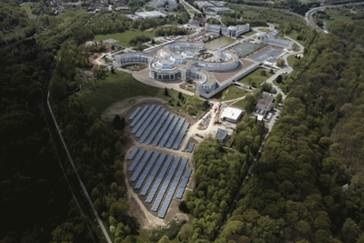When panel level electronics arrived on the scene a few years go in the form of a dozen startups pioneering microinverters and optimizers, I reached out to a number of solar installers for their opinion of the technology.
At the time, every single major installer I spoke with declared the technology immature and unfit for the grueling rooftop environment.
Fast forward to today, and there are are least four of those startups actively installing tens of megawatts of these products. And all of those reluctant installers have become adopters of the technology.
Until recently, the hundreds of thousands of units shipped by Enphase, SolarEdge, Tigo, Petra Solar, and eIQ have gone through smaller installers in the long tail, but now that's changed as well. Panel-integrated microinverters from AU Optronics and others are soon shipping equipped with electronics from SolarBridge.
The entry of SMA and Power-One into the distributed electronics fray would seem to validate the market and scheme.
Optimum Size and Scale for Distributed Electronics and Microinverters
EIQ Energy, with its parallel-DC approach, is working on a 1.2-megawatt installation with Granite in Coalinga, California that has been completed and is ready to go live. A spokesperson for the firm suggested it might be the largest installation using distributed power electronics.
We figured we'd check on the size of the installations being worked on by these vendors.
SolarEdge is installing a remarkable solar project at the the offices of the French conglomerate Bouygues near Paris. The 1-megawatt ground-mount pictured is the first stage of a 3-megawatt system.
Tigo's distributed MPPT solution is being deployed in a 608-kilowatt combined rooftop and parking lot job that covers 220 parking spaces at the Plantronics headquarters in Santa Cruz (see picture accompanying the article). Jeff Krisa of Tigo said that about 10 percent of their business is in deployments greater than 30 kilowatts, while they have 75 systems greater than 100 kilowatts, including a 650-kilowatt installation at the offices of Clif Bar. In Krisa's words, "Small commercial has definitely broken through." He added that Tigo has both a 1-megawatt and a 3-megawatt job in the works.
Krisa also claims that the current cost structure of microinverters "doesn't take them beyond 10 or 20 kilowatts."
Jurgen Krehnke, President and General Manager of SMA America, told Greentech Media, “The SMA microinverter can easily scale above 2 kilowatts. However, we believe microinverters are not cost-effective above this limit. Microinverters are excellent for difficult roof orientations, starter systems, and small applications, but once you get above 2 kilowatts, microinverters are not cost-competitive with leading string inverters, and the performance gains, as shown by independent testing, don’t warrant the extra expenditure required for large systems."
These warnings that microinverters cannot be of value beyond a few kilowatts would seem to fly in the face of the actual installations being done by microinverter leader Enphase.
A spokesperson for Enphase told me that the firm has a few 1+ megawatt projects in the pipeline, although the largest single-site project completed is in the 400-kilowatt range.
Here's a photo of a 180-kilowatt Enphase install.

And here's an image of the 1-megawatt SolarEdge installation.



